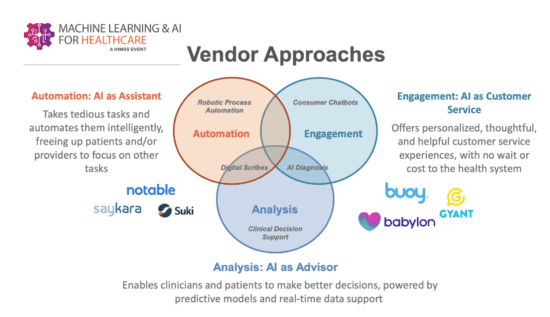In the last post, we discussed the interesting angle of investors evaluating a health AI solutions’s commercial prospects based on its ability to increase volumes and market share for its customers. Honestly, I see that as one of the most powerful ways to create an ROI case for the customers. Every business wants more customers and is competing for them with a number of other companies. As such, a technology that can improve their offerings for their prospective customers would be very compelling. Identifying and evaluating AI solutions that can do this is a source of competitive advantage for those that know how to do it.
Other key consideration is defining the ROI for health AI solution could be their impact on the workforce. Currently, healthcare is suffering from a shortage of staff and the burnout of the existing staff. That means technologies that can make life easier for the staff can deliver big ROI for those businesses. Improving satisfaction of the existing staff means that you can become an attractive destination for the prospective team members. AI technologies have a number of applications that can do this in the short-term and deliver for their users. This spans from helping with provider documentation, charge capture, virtual nursing assistants, patient communication, prior authorization process, and more. You notice that many of these applications are administrative and not clinical. There is a reason for that. Given the novelty of AI applications in healthcare, the customers (health systems) and their actual users (doctors, nurses, administrative staff, etc) will be concerned about the risk of these technologies. These types of administrative and operational use cases are lower risk since they don’t involve patient care and clinical decisions.
Nobody loves busy work and if AI applications can do some of the heavy lifting in these arduous processes, a strong business case can be made for the decision makers at these institutions. Those decision makers want to improve retention of their existing staff and this is a great way to do it. As such, investors evaluating these types of solutions should carefully examine how they might impact the staff and if the impact is high enough, that may make it a must-have for these customers. That’s what you want to invest in: a health AI must-have application for the prospective customers. In the short-term, technologies that help with staff shortage or burnout will get a serious look.
Artificial intelligence could be about to improve the way nurses do their jobs. Recent exciting developments include bottles which automatically issue reminders to drink, diapers that sound an alert when wet and sensor-equipped stoma pouches. AI will change the focus of nursing care, improving nursing documentation, automating data collection and performing some of the tasks that are currently done by nurses. Professional nursing care will change from being reactive to being predictive, preventive nursing care. These are a here and now use cases given the issues we’ve discussed.
Some investors may not immediately recognize these as the health AI use cases that can potentially deliver the highest ROI. However, I think they represent great short-term use cases that can see adoption immediately and have large market sizes. Just look at all the money that has been invested in drug discovery, what many people consider a very aspirational use case for AI. However, if you examine the billions of dollars invested in drug discovery process so far and what has been delivered, it has not been a good area to invest in. Many of the companies are no longer around or if they went into the public markets, their market capitalization is down dramatically. This underlines a key learning here that the most splashy use cases may not be the best investment opportunities.






